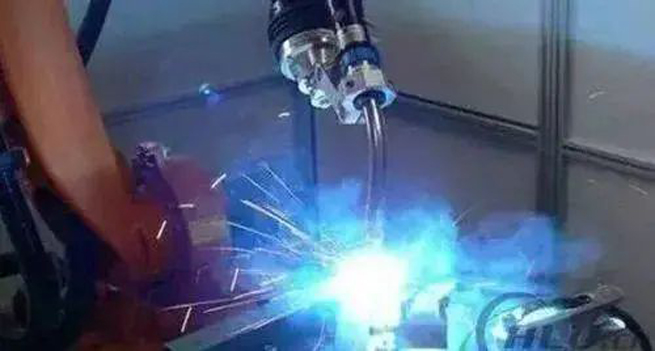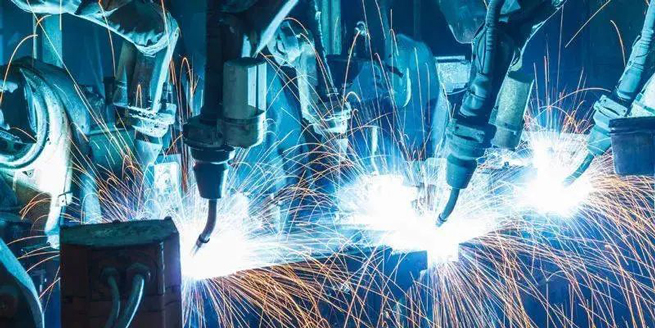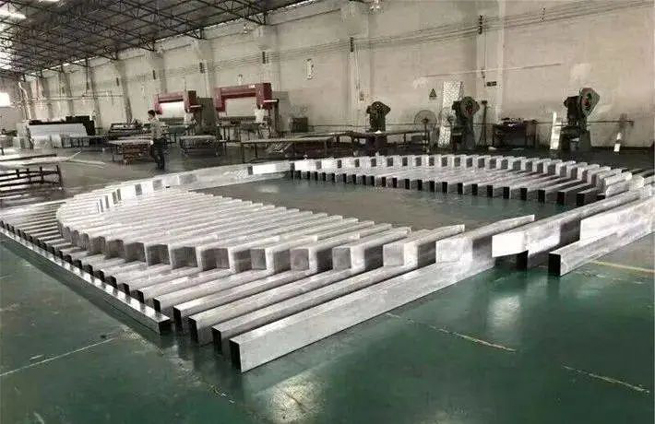Welding characteristics of aluminum and aluminum alloys
1. Oxide film:
Aluminum is prone to oxidation in the air and during welding, resulting in high melting point and very stable alumina (Al2O3) that is difficult to remove.

Obstructing the melting and fusion of the base material, the oxide film has a high density and is not easy to float on the surface, resulting in defects such as slag inclusion, incomplete fusion, and incomplete penetration.
The surface oxide film of aluminum material and the adsorption of a large amount of water can easily cause porosity in the weld seam. Before welding, strict surface cleaning should be carried out using chemical or mechanical methods to remove the surface oxide film.
Strengthen protection during the welding process to prevent oxidation. When tungsten inert gas arc welding, an AC power source is used to remove the oxide film through cathodic cleaning.
When gas welding, use a flux that removes the oxide film. When welding thick plates, the welding heat can be increased. For example, if the helium arc heat is high, helium gas or a mixture of argon and helium gas can be used for protection, or a large standard melting electrode gas protection welding can be used. In the case of direct current positive connection, "cathode cleaning" is not required.
2. High thermal conductivity
The thermal conductivity and specific heat capacity of aluminum and aluminum alloys are more than twice that of carbon steel and low alloy steel. The thermal conductivity of aluminum is more than ten times that of austenitic stainless steel.
During the welding process, a large amount of heat can be quickly transferred to the interior of the base metal. Therefore, when welding aluminum and aluminum alloys, energy is not only consumed in the molten metal pool, but also unnecessarily consumed in other parts of the metal. This useless energy consumption is more significant than steel welding.
In order to obtain high-quality welding joints, it is advisable to use energy sources with concentrated energy and high power, and sometimes preheating and other process measures can also be used.

3. Large coefficient of linear expansion, easy to deform and generate thermal cracks
The coefficient of linear expansion of aluminum and aluminum alloys is about twice that of carbon steel and low alloy steel. The volume shrinkage rate during aluminum solidification is large, and the deformation and stress of the welded parts are large. Therefore, measures to prevent welding deformation need to be taken.
During the solidification of aluminum welding molten pool, shrinkage porosity, thermal cracking, and high internal stress are prone to occur.
Measures such as adjusting the composition of welding wire and welding process can be taken in production to prevent the occurrence of hot cracks. If corrosion resistance is allowed, aluminum silicon alloy welding wires can be used to weld aluminum alloys other than aluminum magnesium alloys.
When the silicon content in aluminum silicon alloy is 0.5%, there is a greater tendency for hot cracking. As the silicon content increases, the crystallization temperature range of the alloy becomes smaller, the fluidity significantly improves, the shrinkage rate decreases, and the tendency for hot cracking also decreases accordingly.
According to production experience, when the silicon content is 5%~6%, thermal cracking does not occur. Therefore, using SAlSi strips (silicon content is 4.5%~6%) welding wire will have better crack resistance.

4. Highly soluble hydrogen
Aluminum and aluminum alloys can dissolve a large amount of hydrogen in the liquid state, while hydrogen is almost insoluble in the solid state. During the solidification and rapid cooling process of the welding melt pool, hydrogen cannot overflow in time and is prone to forming hydrogen pores.
The moisture in the arc column atmosphere, as well as the moisture adsorbed on the surface oxide film of the welding material and base metal, are all important sources of hydrogen gas in the weld seam.
Therefore, strict control should be exercised over the source of hydrogen to prevent the formation of pores.
5. The joint and heat affected zone are prone to softening
Alloy elements are prone to evaporation and burning, resulting in a decrease in weld performance.
When the base metal is subjected to deformation strengthening or solid solution aging strengthening, the welding heat will cause a decrease in the strength of the heat affected zone.
Aluminum has a face centered cubic lattice without any isomers, and there is no phase change during heating and cooling. The grain size of the weld seam is prone to coarsening and cannot be refined through phase change.
Almost all welding methods can be used to weld aluminum and aluminum alloys, but aluminum and aluminum alloys have different adaptability to various welding methods, and each welding method has its own application scenarios.
Gas welding and electrode arc welding methods have simple equipment and convenient operation. Gas welding can be used for repairing welding of aluminum sheets and castings with low welding quality requirements. Welding rod arc welding can be used for repairing welding of aluminum alloy castings.
Inert gas shielded welding (TIG or MIG) is the most widely used welding method for aluminum and aluminum alloys.
Aluminum and aluminum alloy thin plates can be welded using tungsten electrode AC argon arc welding or tungsten electrode pulse argon arc welding.
Aluminum and aluminum alloy thick plates can be welded using tungsten helium arc welding, argon helium mixed tungsten gas shielded welding, melting electrode gas shielded welding, and pulse melting electrode gas shielded welding. The application of melting electrode gas shielded welding and pulse melting electrode gas shielded welding is becoming increasingly widespread.
